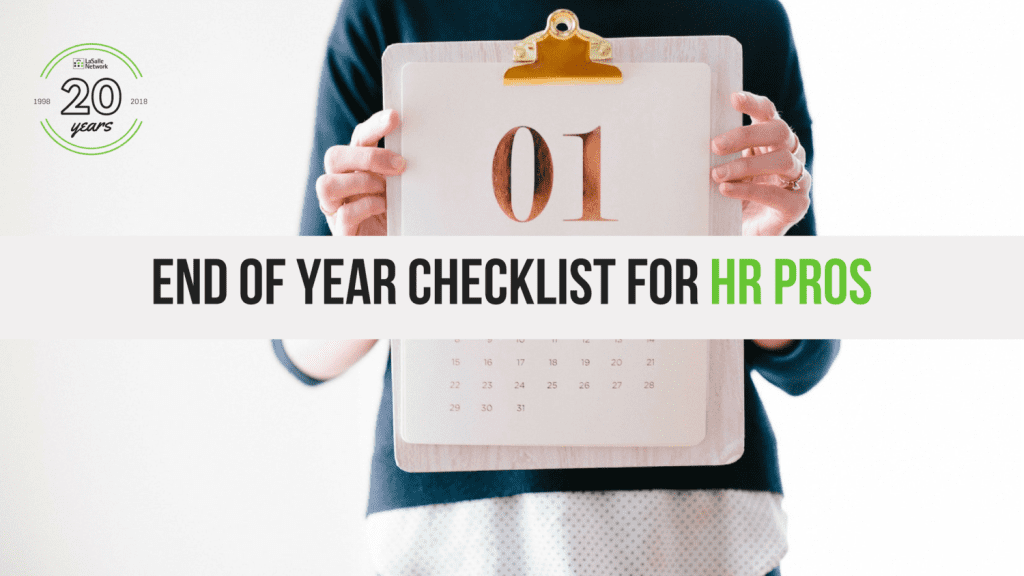Before closing out 2018, below is a checklist for HR professionals to end the year on a high note and set themselves and their businesses up for success in the New Year.
Rethink your handbook.
Review company policies and update or adjust if any laws have been passed (or will be passed come January 1) that affect your organization. For example, paid sick leave may have been passed in your area, so your handbook should reflect that. Additionally, if there are workplace trends, like work-from-home opportunities or flexible scheduling that you think would help employee morale and/or retention, the end of the year is a good time to consider implementing that and updating your handbook to reflect the changes.
Collect updated staff information.
Between moving, marriages, name changes, etc. it can be difficult to keep up with employee addresses or in case of emergency contacts, so use the end of the year to have all employees provide their most up-to-date personal information. When benefits notices, W-2’s, tax forms are sent, it’s on HR to make sure they’re getting sent to the right person and place.
Conduct an open enrollment audit.
For many in HR, benefits and open enrollment takes up a large part of their time and resources in the last quarter of the year. It’s crunch time to get employees enrolled and make changes to any plans before the deadline. Make sure your hard work doesn’t go to waste by conducting an audit of this year’s open enrollment. Get with your broker to check that the employees that wanted to make changes or needed to enroll were actually signed up and no mistakes were made.
Review salaries.
While managers should play a big part in advocating employee raises, HR professionals should still be reviewing salaries at a high level. Map out employees by tenure and look at what staff is making. If you have a tenured employee who hasn’t had a raise in a few years, be proactive and let their manager know. This way, any salary adjustments can go into effect come the first of the year.
Notify employees of changes or deadlines affecting them.
For instance, if you have employees out on FMLA, they need to be notified of changes to family and medical leave policies that go into effect on January 1. Or, if your organization provides a Flexible Spending Account (FSA), employees that are signed up for it need to be notified of their balance and whether they need to use it by the end of the year or, if it can be rolled over.
Additionally, if your organization encourages employees to use their PTO or has a use it or lose it policy, look at how much PTO people have taken. If someone has been with your company for a few years and has 5 days left, let them know it’s theirs to use. This can go a long way in helping employees feel supported inside and outside of work.





